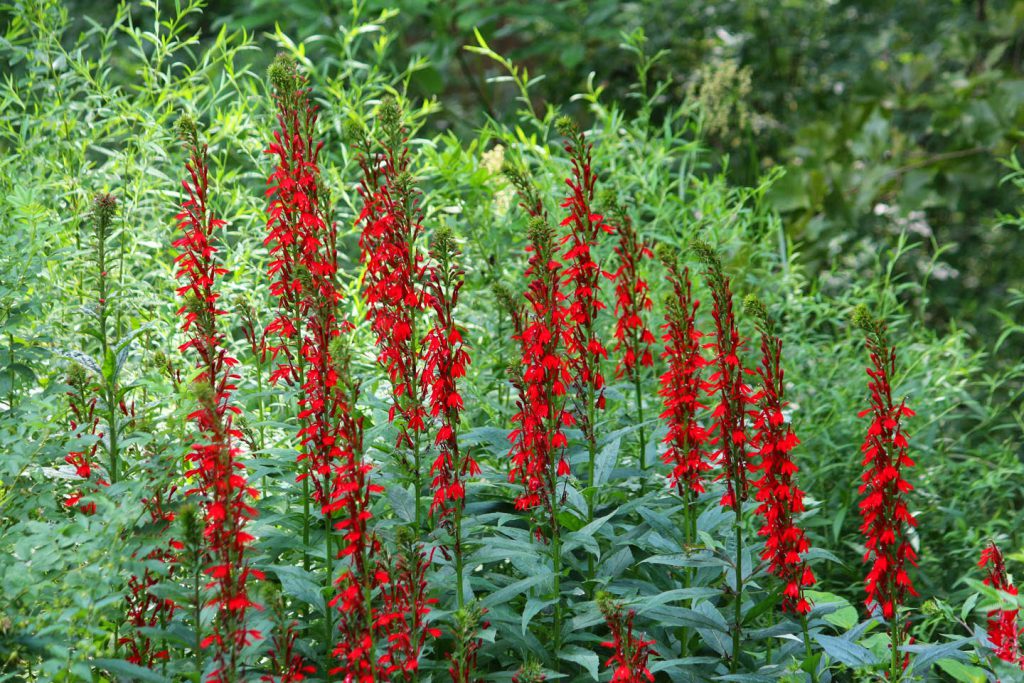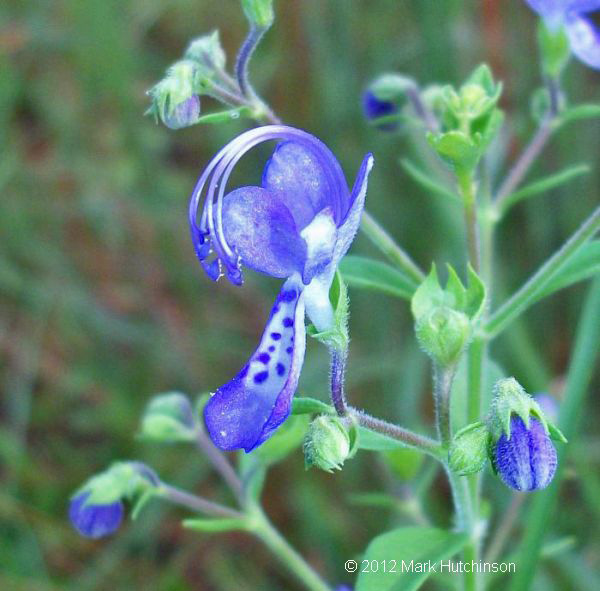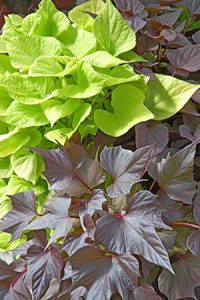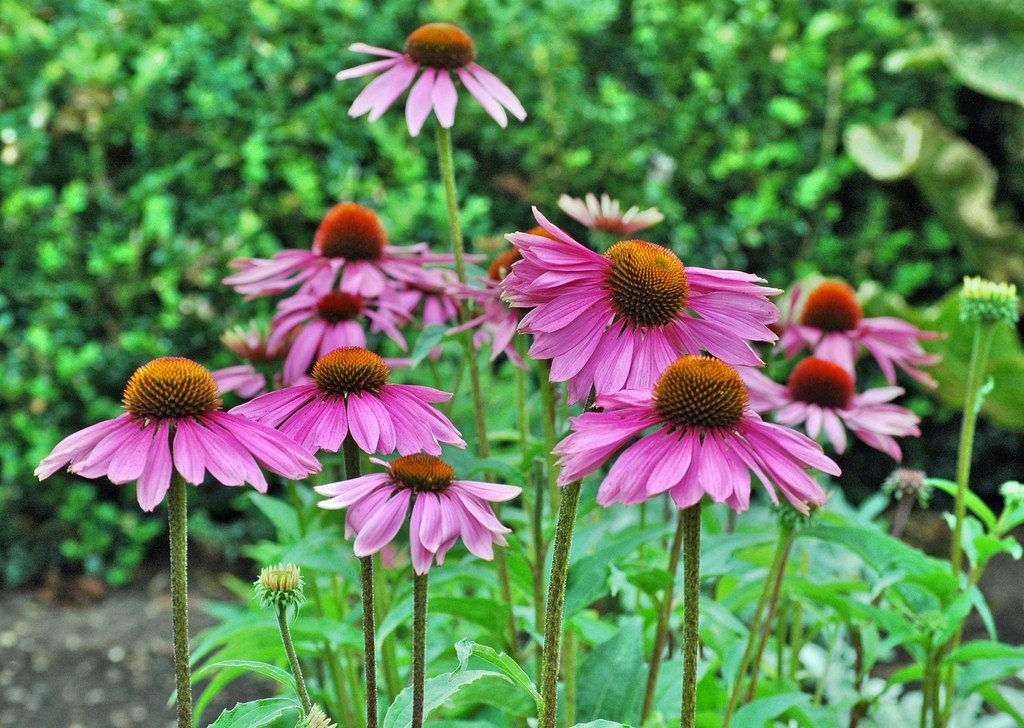Landscape Diversity with Annuals and Perennials
Let us spice up our landscapes. Our landscapes our overrun with a limited plant palette. We must diversify the landscape. In this landscape series, “Diversify the Landscape”, we are exploring unique plants we could see more of and to diversify the landscape.
An important caveat is that the plants listed in this article are only recommendations. Under the Florida-Friendly Landscaping Program’s first principle, “Right Plant, Right Place” our only limitation is our environmental conditions, landscape functions, and invasive plant material. As an example, plant sun-loving plants in full-sun conditions.
For the series, we are working from the ground up. In our previous article, we explored some unique groundcovers, which included Sunshine Mimosa, Fogfruit, Twin Flower, and Blue Daze. Therefore this article will explore reliable annuals and perennials that could be used more in the landscape.
The annuals and perennials we will discuss in today’s article include Cardinal Flower, Forked Blue Curls, Lion’s Ear, Ornamental Sweet Potato, Purple Coneflower.
Cardinal Flower (Lobelia cardinals)
Cardinal Flower (Lobelia cardinalis) is a striking flowering perennial. Its erect, vibrant red flowers bloom during the summer and are showstoppers. This native plant prefers moist areas of the landscape and adapts to different sunlight conditions, although it prefers full to part sun conditions. Cardinal Flower depends on hummingbirds for pollination. Therefore, for any gardeners interested in attracting hummingbirds to their landscapes, mix small masses of Cardinal Flower with other shrubs and groundcovers. Intermix Cardinal Flower with some blue or yellow flower plant material to allow the colors to pop!

Forked Bluecurls (Trischostema dichotomum)
Forked Bluecurls (Trichostema dichotomum) is an annual that gets approximately three feet tall and two feet wide. It produces showy blue flowers and emanates an incredibly pleasant fragrance. The bluecurls is a powerful self-seeder, making itself a powerhouse plant for your wildflower garden. While flowering during the late summer, be on the lookout for hummingbirds and butterflies. Consequently, utilize this plant as an accent plant within your garden. Its blue color and aromatic fragrance will be a talking piece of your garden.

Lion’s Ear (Leonotis leonurus)
Lion’s Ear (Leonotis leonurus) is a semi-woody perennial native to southern Africa’s rocky grasslands. The Lion’s Ear is surprisingly underutilized but is known for its bright orange, tubular flowers that light up a landscape in the late summer and early fall. While blooming you will notice it is covered with honeybees, butterflies, and hummingbirds. Plant your Lion’s Ear in full-sun but does well in part-shade conditions. Although, it will need well-drained soils; excessive water can lead to its death.

Ornamental Sweet Potatoes
Ornamental Sweet Potatoes are not going to attract a bunch of pollinators to your garden, but this ornamental perennial is a wonderful groundcover that adds wonderful color to a landscape. These leafy plants do well in containers and landscape beds, but their chartreuse green to dark purple leaves fill landscapes with spectacular color. Plant your ornamental sweet potato in full sun and well-drained areas. Once planted, you will rarely after to bother them much. They are drought-tolerant and naturally spring back from frost or freeze. Plant as a low groundcover perennial along walkways or landscape edges. There is no doubt that you will quickly fall in love.

Purple Coneflower (Echinacea purpurea)
Lastly, I do not think I could write an article about perennials and annuals without mentioning Purple Coneflower (Echinacea purpurea). Purple Coneflower is one of my favorites. Its low-growing stature and homey purple color is a welcome addition to any landscape. Although, there are many different cultivars of Purple Coneflower, giving many gardeners a slightly broader selection of color variation. Many gardeners stick with the native purple species to attract butterflies. The dead, brown flowers can still add a unique characteristic to a landscape too.

Conclusions
Although I introduced a few annuals and perennials, let us keep exploring ways to diversity the landscape around our homes and communities: our environment will thank you, the pollinators will thank you, and you will thank yourself. What type of annuals and perennials are in your landscape that is not mentioned in this article?
Other Articles in the Diversify the Landscape series
Interested in more gardening-related blogs or following Alachua County’s MGVs on Social Media? Check out the additional links from Dr. Clem.
UF/IFAS Alachua County Extension Master Gardeners, Facebook Page
UF/IFAS Extension Alachua County YouTube Page
 0
0

Comments:
October 18, 2021
Hi Lane, I attached some information via email. Thanks
October 17, 2021
I think I know the answer to this but can you confirm that growing crops in a hydroponic system can not be sold, even at a farmers market, unless that land is categorized as agricultural or if you fall into the "limited use" category, which I believe that requires atleast a single acre of land? If this is correct, do you know if there is any exemptions, as my property would not qualify for limited use, as it's only a half acre. I'm just trying to sell my produce at farms markets as a side business! Thanks for any advice, feedback you can give.
March 30, 2021
You certainly can try to sprout them. You will have a far far greater germination rate if you cold stratify the seed first. Its a very simple process that just requires a wee bit of patience.
March 29, 2021
I’m curious about the cold germination. I’m in zone 10 and the pods are opening. Do I need to do this cold germination process or can I just try to sprout them? Thank you.
March 24, 2021
You are right, good catch! Many of the gardens during the Renaissance Period had varying underlying principles/theories. Le Notre definitely created the synthesized definition of French Classical Gardens, starting with Vaux-le-Vicomte, which definitely had Renaissance/Baroque garden influences. One major difference I've always liked was the use of theatrical perspectives within gardens (focal points, unification around one plane/frame, and use of planes to influence depth) and Mollet's influence on parterres. Of course, the French-style gardens were substantially more grandiose than the Italian Renaissance for purposes of pleasure, entertainment, conducting court, etc, but focused much on absolutism. I'd love for you to send me some additional resources because it is hard to find them. You can send me a direct email to taylorclem87@ufl.edu Thank you.
March 23, 2021
The Gardens of the Palace of Versailles is not a Renaissance Garden. It is instead a French Classical Garden, which held quite strongly opposing values of the renaissance ideals. It was not even in close proximity with the Renaissance period.
January 12, 2021
Thank you for your great question. We have lots of materials and resources available online for homeowners. The Gardening Solutions webpage is a great webpage for all homeowners (www.gardeningsolutions.ifas.ufl.edu). We also have a county webpage dedicated to the Florida-Friendly Landscaping Program that includes additional resources (https://sites.google.com/ufl.edu/alachuaffl/home). Regarding services, we offer programs throughout the year relating to landscaping best management decisions and vegetable gardening. I recommend checking out our county’s programs/events page for all our upcoming programs (https://sfyl.ifas.ufl.edu/events/?location=alachua). Other services we provide include our Master Gardener Volunteer Help Desk. You can reach out to our Master Gardeners Volunteers via email (mag@alachuacounty.us)or phone (352)955-2402 to help troubleshoot any issues within your landscape or garden. Also, the Master Gardeners perform Florida-Friendly Landscape Recognitions. Volunteers visit a homeowner’s property and do a landscape evaluation. This free evaluation allows homeowners to learn ways to improve their landscapes and potentially earn a Gold or Silver landscape recognition. Taylor Clem, PhD Environmental Horticulture Extension Agent UF/IFAS Alachua County Extension 106 SW 140th Terr. Suite 3 • Newberry • FL • 32669 955-2402 (office)
January 8, 2021
Is there any documentation, preferably online, that defines and lists the availability of services for homeowners and those planning on planting beneficial plants on their property?
October 6, 2020
I recommend reaching out to our office. Dr. Cindy Sanders is our county's livestock agent and she will be able to answer your question and give recommendations. Feel free to call us from (352)955-2402
August 23, 2020
I would like to know if horses can Eat sunshine mimosa
August 3, 2020
Great Blog! Looking forward to more!
July 9, 2020
Genevieve, Thank you for reaching out. We have quite a few publications that can help you out! Here are a couple articles from UF/IFAS Extension relating to butterfly gardening and attracting wildlife to your landscape. If you'd like further information, feel free to reach out to our office at (352)955-2402 or email our Master Gardener Volunteer help desk at mag@alachuacounty.us. Butterfly Gardening in Florida: https://edis.ifas.ufl.edu/pdffiles/UW/UW05700.pdf Landscape Backyards for Wildlife: https://edis.ifas.ufl.edu/pdffiles/UW/UW17500.pdf
June 19, 2020
Interested in plants that are easy, come up each year. attract butterflies and humming birds
May 27, 2020
Good morning, Thank you for reaching out to UF/IFAS Extension Alachua County. I'll forward your question to our Livestock Agent, Dr. Cindy Sanders. She'll be able to give you the best recommendations regarding your pasture. Thank you, Taylor Clem
May 26, 2020
I'm in Alachua county and over the years Sunshine Mimosa has spread across quite a bit of my bahia grass horse pasture. It's intermixed with the grass. I'm not finding anything that says it's toxic to horses but I don't think my horses eat it. I think I could control it with herbicide but am hesitant because it is always covered with honey bees and native bees. Is this something I should try to control? Is there a danger that it will choke out my pasture?
April 27, 2020
Monarchs caterpillars only eat milkweed, and the butterflies only lay eggs on milkweed.
April 23, 2020
I have counted as many as 30 monarch (and queen) caterpillars munching happily on my Giant Milkweed. Later I discovered more than 15 spent chrysalis in the cat palm growing beside it.
April 20, 2020
Hi Carlos, I recommend always to follow science-based information, shadow a beekeeper and have the opportunity to learn some about the biology and principles of honeybees before any major investment. Keep in mind that keeping bees in Florida is different from keeping bees in other areas so try to learn from resources that are focused at least to the South East. The beekeeping series offered in Alachua County is a good place to start, the next series cycle starts in November. I also recommend Bee College and the Master Beekeeping program at UF. You can do it online or face-to-face (annual event). You can check it out at http://entnemdept.ufl.edu/honey-bee/extension/master-beekeeper-program/. If you have specific questions on these programs you may contact Amy Vu at amy.vu@ufl.edu. Lastly, you can contact the Gainesville Area Bee Club and join them to meet other beekeepers and learn about others' experiences (https://www.gainesvilleareabeeclub.com/). Here are some recommended sources for you to start exploring beekeeping: - http://entnemdept.ufl.edu/honey-bee/beekeeper-resources/ - https://impact.extension.org/?s=beekeeping - https://honeybeehealthcoalition.org/
April 18, 2020
Hello I would like to start with bee keeping!! Any advise ?
April 16, 2020
Hello do Monarch caterpillars eat only milkweeds leave or will they ravage my entire garden?
April 14, 2020
James, There are different types of turfgrass species, but finding a specific species that are good for sun and shade is difficult. Seville St Augustine and Empire Zoysiagrass are the most shade-tolerant turfgrasses, but they still need a good amount of sun. Areas directly under trees won't typically develop a good turf stand. The best strategy for managing turfgrass is following IFAS recommendations for growing turf in shadier conditions. If you would like to get more information, email me at taylorclem87@ufl.edu. Also, we have an upcoming webinar on turfgrass management on April 23 from 4 - 5:30pm. You can register and see more information here: https://www.eventbrite.com/e/turfgrass-in-alachua-county-tickets-102293845646 Thank you very much, Taylor Clem Environmental & Community Horticulture Agent UF/IFAS Extension Alachua County.
April 6, 2020
I am looking for a grass to replace my St. Augustine which has been eaten by chinch bugs. I have both full sun and full shade areas. My yard is now almost completely covered by sand burs. Is there one grass for both shade and sun? I am a disabled vet and mowing the grass is about the limit of the yard work I can do.
March 17, 2020
I'm guessing the March 19 event is cancelled. However, if you had handouts about planting edible plants, would you either post them or email them to me? Thanks!
February 4, 2020
Thank you so much for your article. I am a firm believer in Companion planting.
June 5, 2019
I recently purchased a giant milkweed plant. I had never heard of it before. Do monarch caterpillars like it as much as regular milkweed? Thanks!
July 11, 2018
Dam awesome Kevin. I'm proud of you!
June 12, 2018
Hi Dave - I would, as carefully as possible, transplant. Ideally you would want to wait until your plants are roughly 3 inches tall. You may still want to wait with 1/2 of your plants. I just don't know if your plants will make that size given you germinated in egg cartons. You could also cut the egg cartons apart & just transplant the whole thing. The egg cartons should decompose. Good Luck.
June 12, 2018
I have planted 6 varieties of .milkweed from seeds in paper egg cartons after 30 days in the fridge. Germination went well. I have about 20 young seedlings about 3/4 to an inch high. Should I get them out of the cartons and into pots now or wait til they're bigger? Thanks
June 1, 2018
Santa Rosa Gardens, a mail-order company in Pensacola, Florida has incarnata and tuberosa. The website is santarosagardens.com. Tell them Louise from the Panhandle Butterfly House sent you. They are a great company.
Comments are closed.